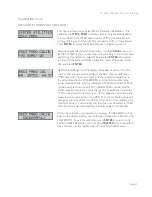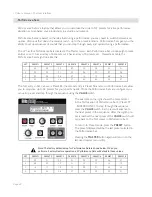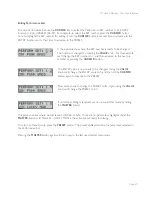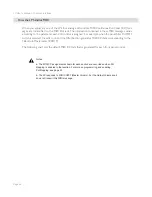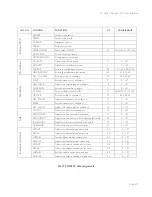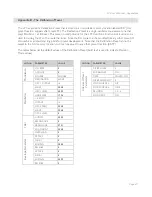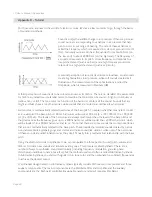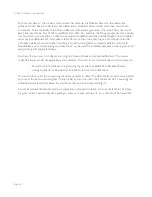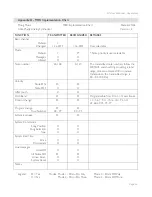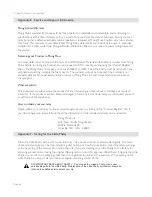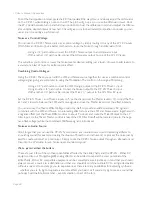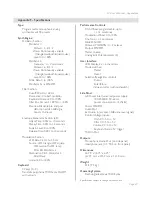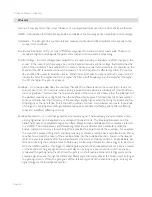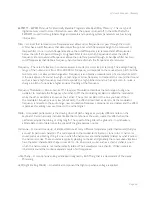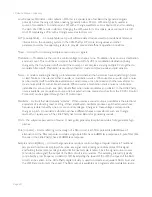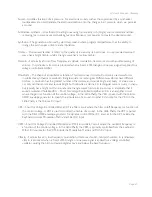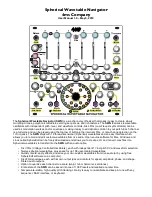
Page 54
LP User’s Manual - Appendices
Page 55
LP User’s Manual - Appendices
The Moogerfooger® CP-251 Control Processor makes an ideal companion to the Little Phatty synthesizer.
The CP-251 provides an LFO with two waveforms (Triangle/Square), a Sample & Hold circuit with two out-
puts (stepped/smooth), a Lag Processor, a Noise source, a Mixer and two Attenuators. The CP-251 greatly
expands the sonic palate of the LP, allowing for the creation of interesting new sonic textures.
Here are some possible confi gurations for using the CP-251 with the Little Phatty. Grab some patch cords
and try these ideas!
Simple confi gurations using the LFO from the CP-251:
To create a steady Vibrato effect:
- Using a 1/4’ patch cable, connect the CP-251 LFO Triangle output to an Attenuator Input.
- With another 1/4’ patch cable, connect the Attenuator Output to the LP’s Pitch CV jack.
On the CP-251, set the LFO Rate control to 6 Hz (about 1 o’clock), and adjust the Attenuator to about 0.5
on the dial (a very low amount). This confi guration will produce the mild pitch wavering known as vibrato.
Setting the LFO Rate considerably higher will result in wild FM textures.
To create Tremolo:
- Using a 1/4’ patch cable, connect the CP-251 LFO Triangle output to an Attenuator Input
- With another 1/4’ patch cable, connect the Attenuator Output to the LP’s Volume CV jack.
On the CP-251, set the LFO Rate control to 6 Hz (about 1 o’clock), and adjust the Attenuator to 10 on the
dial. This will produce the pulsating amplitude modulation known as tremolo. Adjust the LFO Rate to taste.
For a sharp, volume-chopping effect, use the LFO Square wave output in place of the LFO Triangle out.
To produce Timbral Modulation:
- Using a 1/4’ patch cable, connect the CP-251 LFO Triangle output to an Attenuator Input
- With another 1/4’ patch cable, connect the Attenuator Output to the LP’s Filter CV jack.
On the CP-251, set the LFO Rate control to 6 Hz (about 1 o’clock), and adjust the Attenuator to about 2
on the dial. This will produce a pleasing tone modulation as the fi lter cutoff frequency is modulated. Setting
the LFO Rate considerably higher will result in wild timbral textures, while a very low setting will create a
slowly evolving fi lter sweep. For a “random stepping” fi lter effect, use the S&H Out 1 in place of the LFO
Triangle out.
Using the multiple jack on the CP-251, you can simultaneously route the LFO or S&H modulation signal to
the LP’s Pitch, Filter and Volume inputs all at once, or split the modulation signal using the multiple jack and
route it into both Attenuators to have two separately controllable modulation sources for the LP.
Pitch Transposition:
Using an Expression Pedal (like the Moog EP-1), you can program the CP-251 to transpose the LP’s pitch to
any interval desired and have it ready any time you need it. Here’s the connection:
- Connect the EP-1 to an Attenuator Input.
- With another 1/4’ patch cable, connect the Attenuator Output to the LP’s Pitch CV jack.
Appendix G - Using the CP-251 with the Little Phatty

